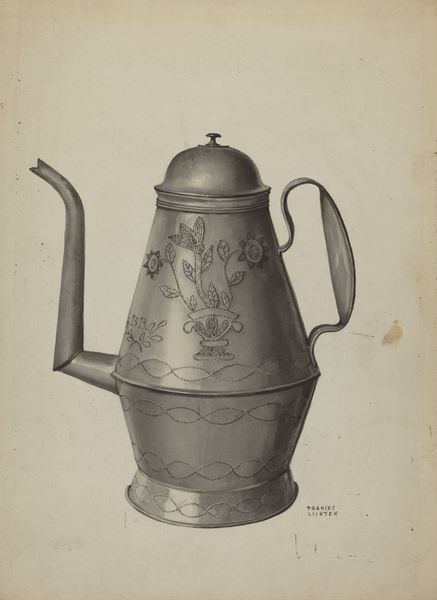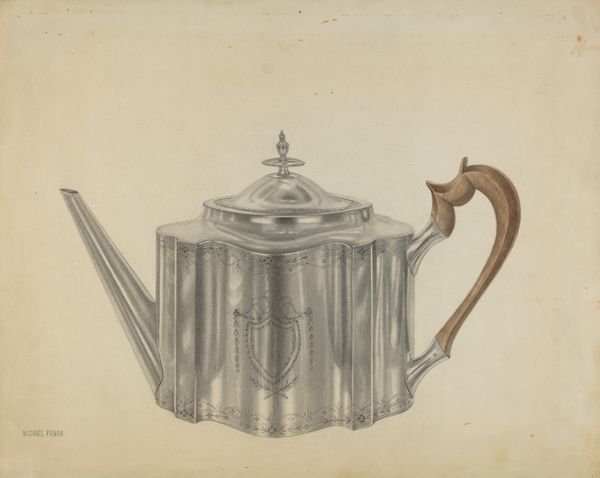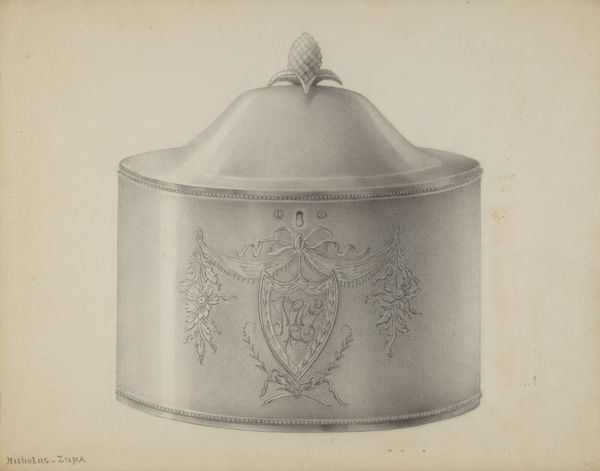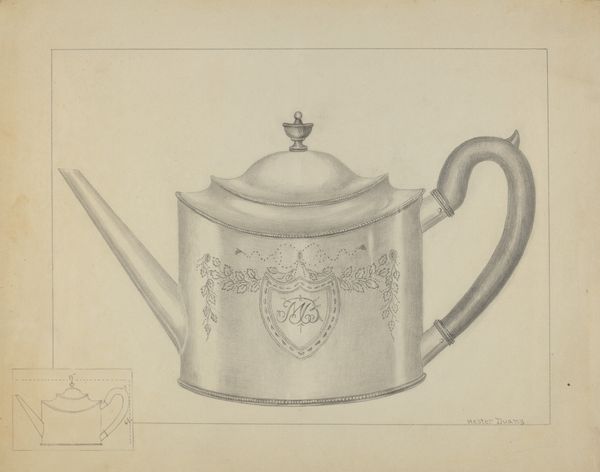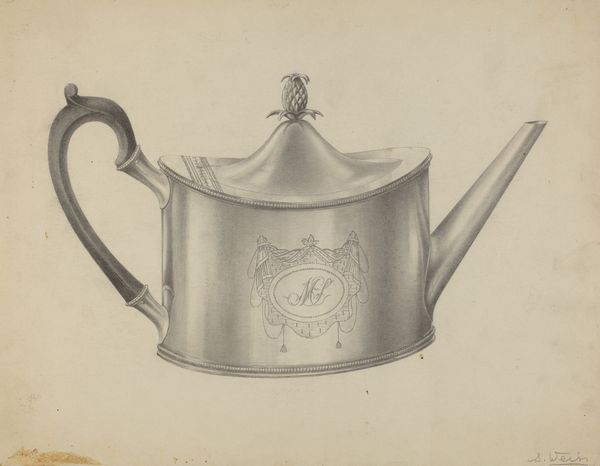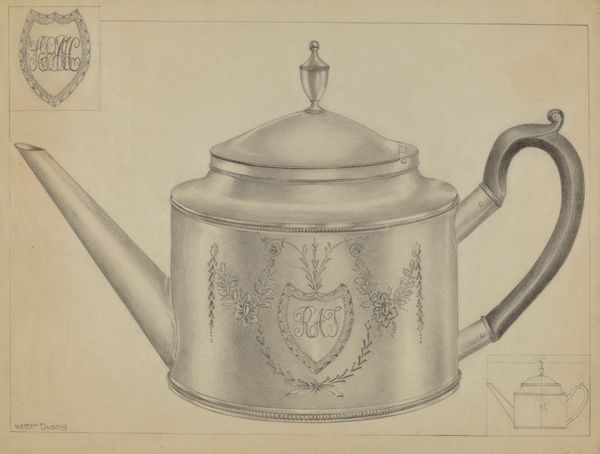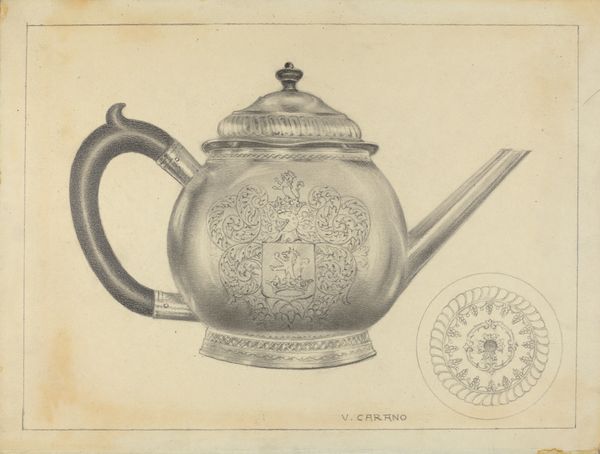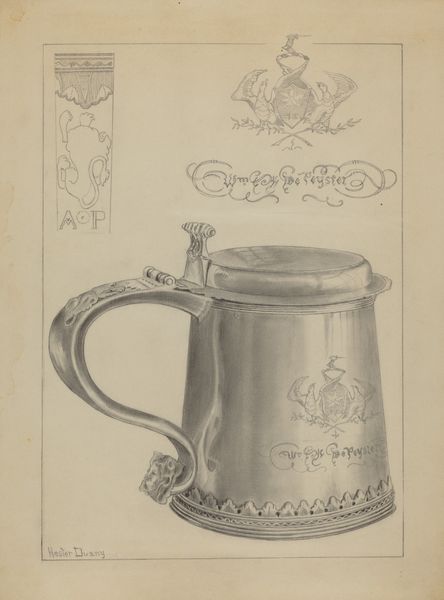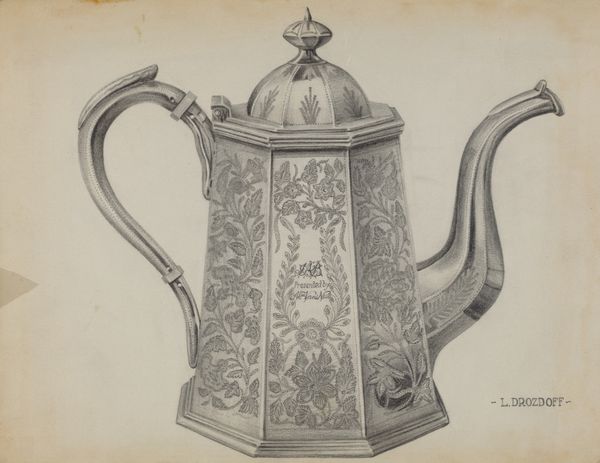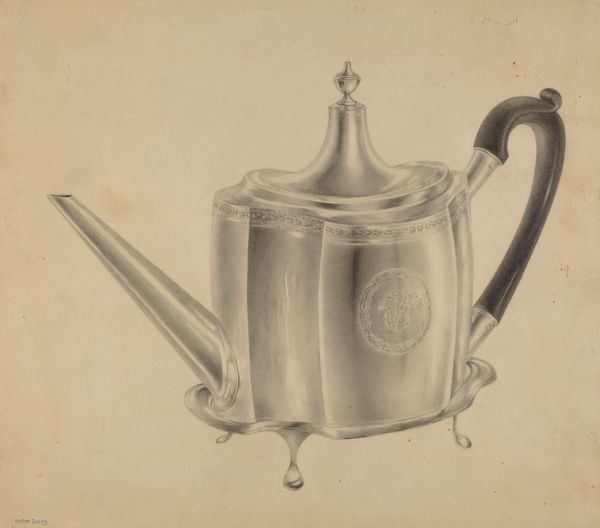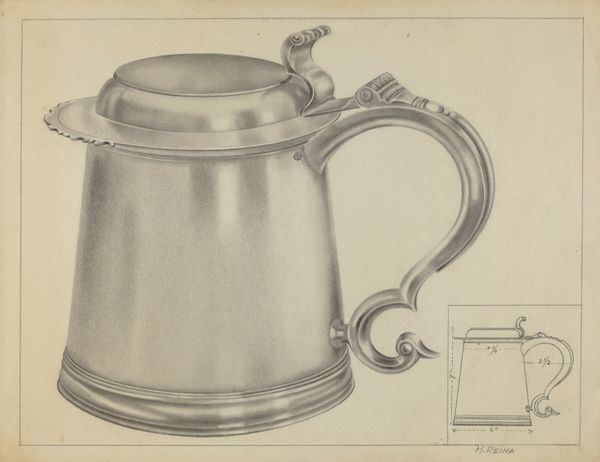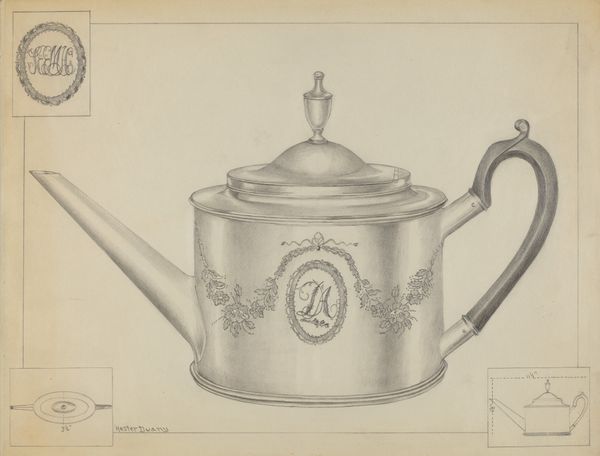
drawing, pencil
#
drawing
#
pencil drawing
#
pencil
#
realism
Dimensions: overall: 22.9 x 30.1 cm (9 x 11 7/8 in.) Original IAD Object: 6 1/2" high; 11 1/2" long
Copyright: National Gallery of Art: CC0 1.0
Editor: We're looking at Isidore Steinberg's "Silver Teapot and Tray" from around 1936, rendered meticulously in pencil. It's remarkable how realistic he makes it look. What jumps out to you? Curator: The precision is indeed striking. Notice the play of light and shadow, meticulously rendered through varied pencil pressure. Steinberg uses tonal shifts to describe the complex geometry of the teapot. The octagonal shape is smartly balanced by the curve of the handle. How does that relationship strike you? Editor: I see what you mean; the soft curve really contrasts with the hard angles of the pot itself. It creates a nice visual tension, especially since the handle’s also a dark color. So, is he emphasizing form over function here? Curator: Arguably so. The almost obsessive detailing—consider the floral and crest on the body of the teapot—suggests an interest in surface texture and decorative patterning. Functionality yields to the visual qualities. Look closely: how do the etched floral flourishes direct the eye around the object's form? Editor: They circle the middle section, making my eyes move around it, sort of like framing it. Also, the whole image uses only line, shape, value, and form… very elemental. I appreciate the careful control of it all. Curator: Indeed. Steinberg reduces the object to its formal essence through light, shadow, and meticulously applied texture to define its existence as an aesthetic construct. It moves from everyday object to artwork simply via form. Editor: That’s such an interesting way to put it – a transformation just through observation and technique! Curator: Precisely!
Comments
No comments
Be the first to comment and join the conversation on the ultimate creative platform.
